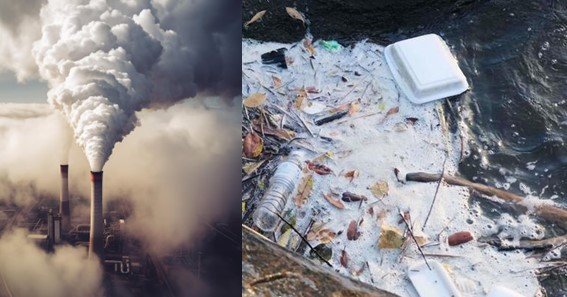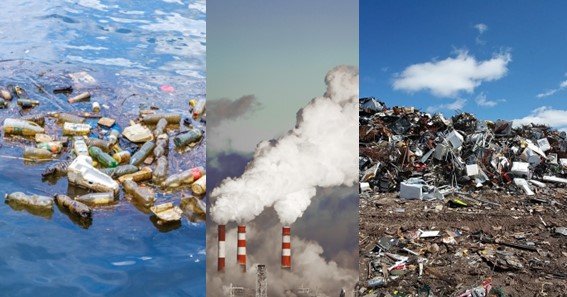Environmental pollution refers to the contamination of the natural environment by harmful substances or pollutants, leading to adverse effects on ecosystems and human health. Explaining environmental pollution involves understanding its causes, types, and the significant impact it has on the planet. Pollution can manifest in various forms, each affecting different aspects of the environment.
Types of Environmental Pollution
- Air Pollution
- What It Is: Air pollution occurs when harmful gases, dust, or chemicals enter the atmosphere, leading to health issues like respiratory diseases and contributing to climate change.
- Causes: Major causes include vehicle emissions, industrial discharges, and the burning of fossil fuels. Natural events like forest fires also contribute to air pollution.
- Effects: The primary effects include smog formation, acid rain, and global warming, which have widespread impacts on health and the environment.
- Water Pollution
- What It Is: Water pollution happens when harmful substances, such as chemicals, plastics, and waste, contaminate water bodies.
- Causes: Common causes are industrial waste discharge, agricultural runoff containing pesticides, and plastic waste entering rivers and oceans.
- Effects: Water pollution can lead to the destruction of aquatic ecosystems, health issues in humans, and the contamination of drinking water sources.
- Soil Pollution
- What It Is: Soil pollution involves the contamination of soil with hazardous chemicals, often due to industrial waste, agricultural chemicals, and improper waste disposal.
- Causes: Causes include excessive use of pesticides, industrial activities, and landfill waste.
- Effects: Soil pollution can lead to reduced soil fertility, contamination of food crops, and disruption of local ecosystems.
- Noise Pollution
- What It Is: Noise pollution is excessive or harmful noise that disrupts the natural balance, often caused by industrial activities, traffic, and urban development.
- Causes: Sources include construction sites, traffic, industrial activities, and loud public events.
- Effects: Prolonged exposure can lead to hearing loss, stress, and adverse effects on wildlife.
- Light Pollution
- What It Is: Light pollution is the excessive or misdirected artificial light that disrupts natural darkness, especially in urban areas.
- Causes: Street lights, commercial signs, and urban lighting are the main contributors.
- Effects: It affects wildlife by disrupting natural cycles and can also interfere with astronomical observations.

Conclusion
Explaining environmental pollution involves not just identifying the different types but also understanding their causes and impacts. Pollution affects every part of our environment—from the air we breathe to the water we drink and the soil that grows our food. Addressing these issues is crucial for protecting the planet and ensuring a sustainable future for all living beings.
FAQ
- What is environmental pollution?
Environmental pollution is the introduction of harmful substances into the environment, leading to negative impacts on ecosystems and human health. - What are the main types of environmental pollution?
The main types include air, water, soil, noise, and light pollution. - How does pollution affect human health?
Pollution can cause respiratory diseases, cardiovascular issues, and other health problems due to exposure to harmful chemicals and particulate matter. - Why is it important to address environmental pollution?
Addressing pollution is essential for preserving ecosystems, protecting public health, and preventing further environmental degradation. - How can individuals help reduce environmental pollution?
Individuals can help by reducing waste, using public transportation, conserving water, and supporting policies aimed at protecting the environment.










